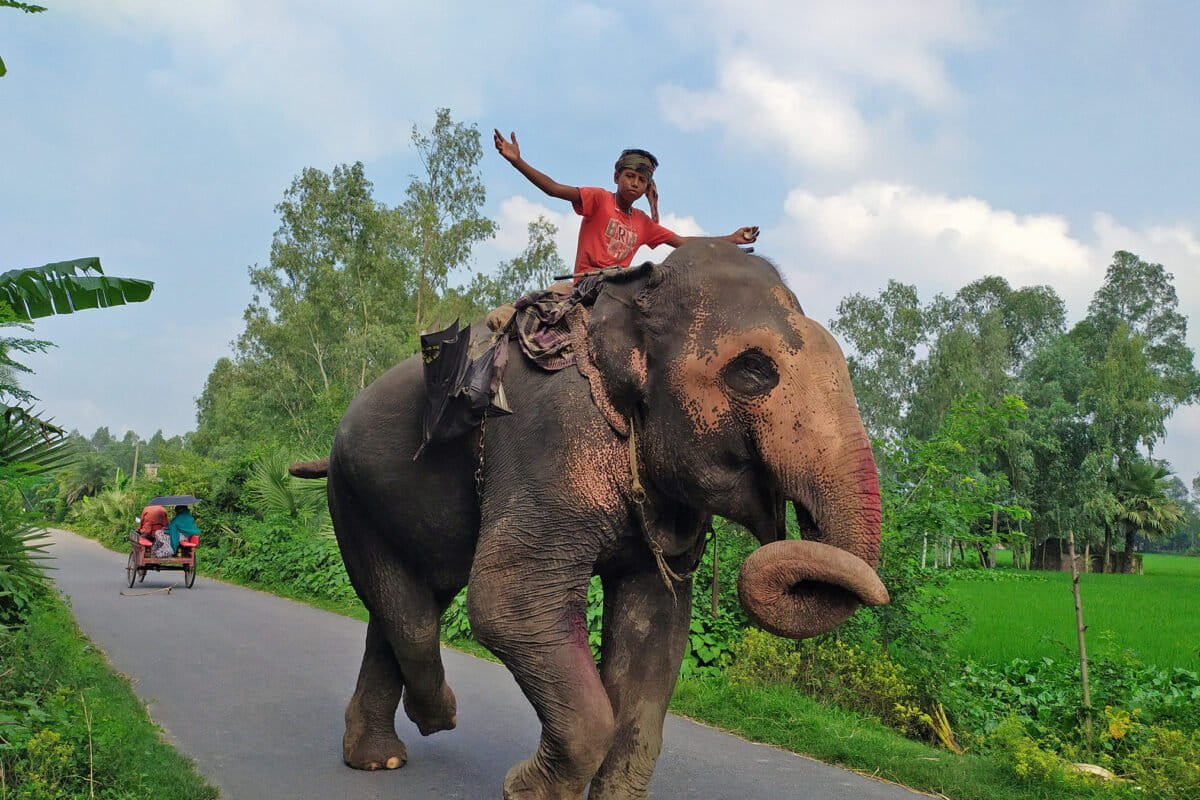Bangladesh is one of the Asian elephant’s habitats, with a presence of 268 giant mammals in its wild; the IUCN declared the species critically endangered in Bangladesh, with the animals living in the southeastern hilly forests and the northeastern part of the country.Data show that apart from populations in the wild, the country is home to 96 elephants living in captivity for different purposes, including for hauling logs and circuses.The government planned to withdraw captive elephants from their current owners and rehabilitate them in the wild and therefore took a project in this regard.
See All Key Ideas
As part of the conservation process for Asian elephants, Bangladesh has taken a new step to retrieve captive elephants from their current owners and rehabilitate them in the wild.
According to the Status of Asian Elephants in Bangladesh report, the country has a mean of only 268 resident elephants, with the status of critically endangered, all residing in the southeastern forest areas of Chittagong, Chittagong Hill Tracts and Cox’s Bazar district. Here, “resident” means those living in the country’s forests, and “nonresident” refers to those frequently visiting from neighboring countries, India and Myanmar.
Apart from these, 96 elephants remain in the country in captivity with different owners. Of them, 14 are owned by various government entities, including zoos and safari parks, while the remaining 82 elephants are kept by several private owners.
Historically, elephants in Bangladesh have been used for a variety of purposes, including amusement and carrying timbers and goods.
Since the use of captive elephants in circuses and as a means of carrying goods is now obsolete due to the availability of machine-driven vehicles, most private owners are using elephants to collect illegal tolls in various localities, including busy market areas.
In recent times, the country has seen some incidents of such activities in which at least one elephant has died from heatstroke while working in extreme heat.
In 2024, the High Court issued a directive to stop illegal activities involving the use of wild species and cruelty toward them.
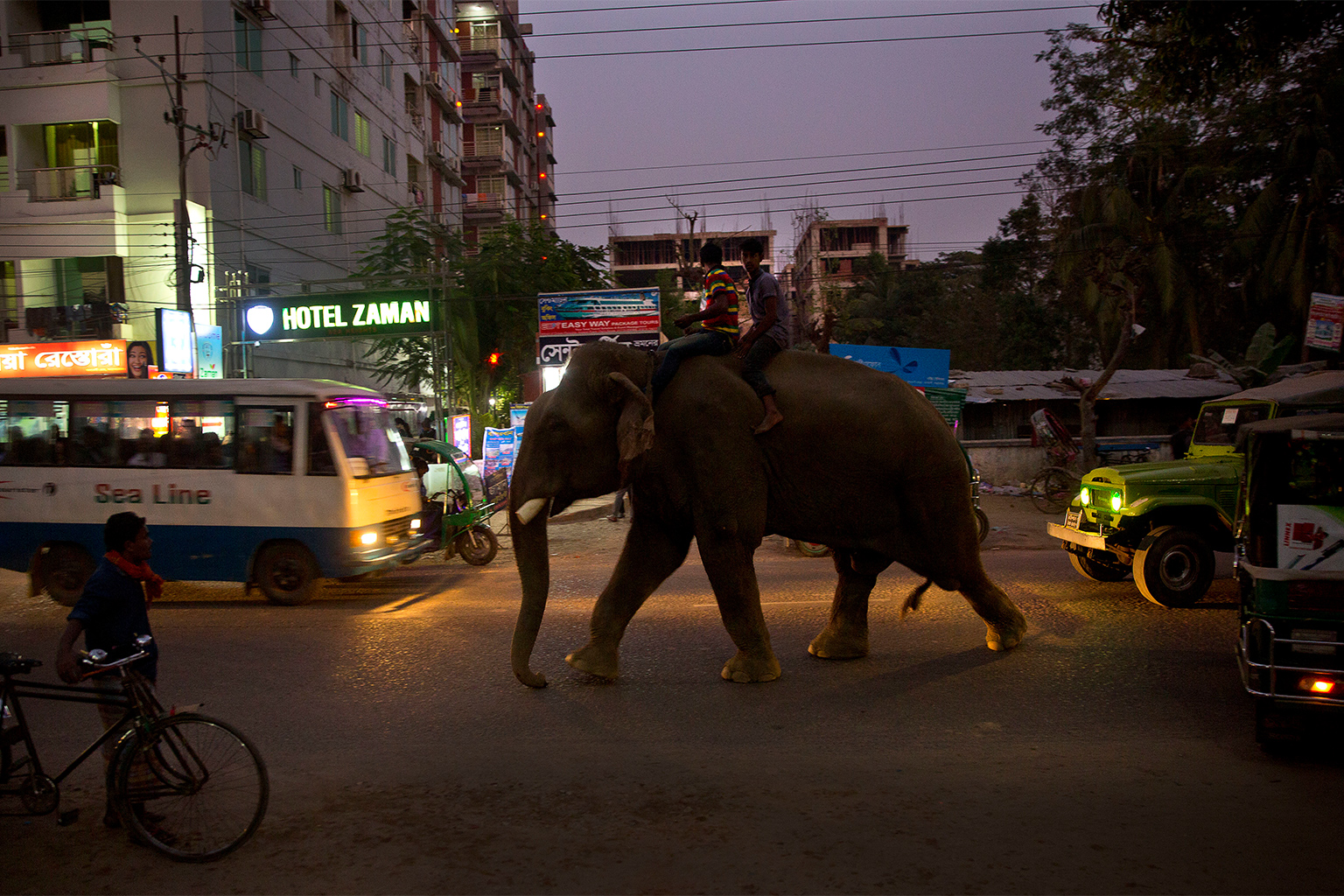 An elephant walks through a street amid traffic in Cox’s Bazar, 2018. Image by AP Photo/Manish Swarup.
An elephant walks through a street amid traffic in Cox’s Bazar, 2018. Image by AP Photo/Manish Swarup.
“Considering the cruelty to the giant species, we planned to retrieve them from their owners and initially keep them in a separate portion of a forest,” said Syeda Rizwana Hasan, adviser to the Ministry of Environment, Forest and Climate Change.
“Based on their adaptability and condition, we will decide later whether they can be rehabilitated in the wild or not,” she also said, adding that whatever the result, the trend of captivity will be stopped, and the elephants will never be back in captivity.
With a population of approximately 52,000 in the wild, the IUCN-declared critically endangered species live in 13 countries.
The project
The three-year project, which was launched in recent months, has an initial plan for a survey to assess the status of the Asian elephants in Bangladesh, including residents, nonresidents and captives.
“Since the last elephant survey in the country was conducted in 2016, we assume that the number of elephants might not be the same. Therefore, we planned to have the survey first,” said project director A.S. M Jahir Uddin Akon.
Regarding the location of the rehabilitation, he said, “Initially, we selected two forests — Rema-Kalenga in Moulvibazar and Chunati in Chittagong. A team of experts is working on finalizing the best option between these two to turn into their home.
“Since such a concept is new in Bangladesh and we don’t have experience in handling the tasks, we are trying to involve the relevant experts in this project to make the initiative successful,” he said, adding that the examples of such global initiatives, including the elephant orphanage in Sri Lanka, will also be visited.
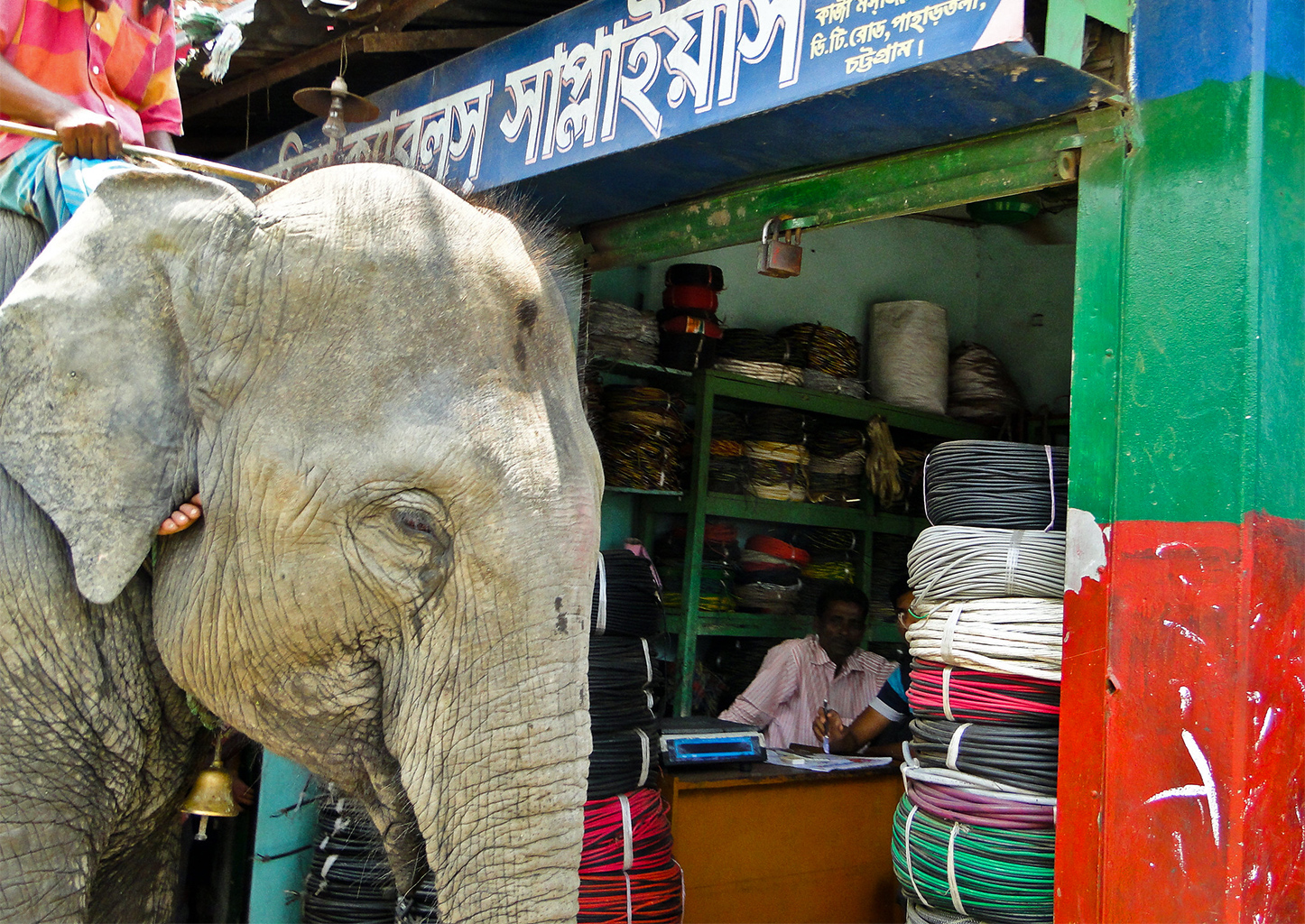 An elephant and mahout in Chittagong city. Image by Stefano F via Flickr (CC BY-NC-SA 2.0).
An elephant and mahout in Chittagong city. Image by Stefano F via Flickr (CC BY-NC-SA 2.0).
Apart from the survey, the 400 million taka ($3.3 million) project will spend money on stakeholder consultations, comprehensive research to find the best way to handle elephants in the wild and purchasing the elephants from their owners.
“Though the initiative is good, it will be tough to implement for several reasons. Firstly, the captive elephants have already lost their wild nature to some extent, and secondly, they might carry different types of diseases due to their close contact with humans, which needs to be handled carefully,” said zoology professor Mohammed Mostafa Feeroz at Jahangirnagar University.
History of captivity of the giant species
The history of capturing elephants from the wild dates back to the 18th century during the British colonial era in the Indian sub-continent.
In that time, elephants were abundant in nature, similar to the vast forest cover. Sometimes they were captured to be tamed for large landowners (Zamindars); other times the East India Company used the elephants for carrying their military equipment or logs cut from forests.
After the end of the British colonial era in 1947, Dhaka became the center of captive elephants in Bangladesh (then East Pakistan). A few places in the capital are still named after elephants. Of them, some of the notable ones are Elephant Road (which was used to move elephants to and from Peelkhana, the royal stable), Mahuttuli, where the elephant operators (mahouts) lived, and Hatirjheel (the lowland where elephants were taken for showering).
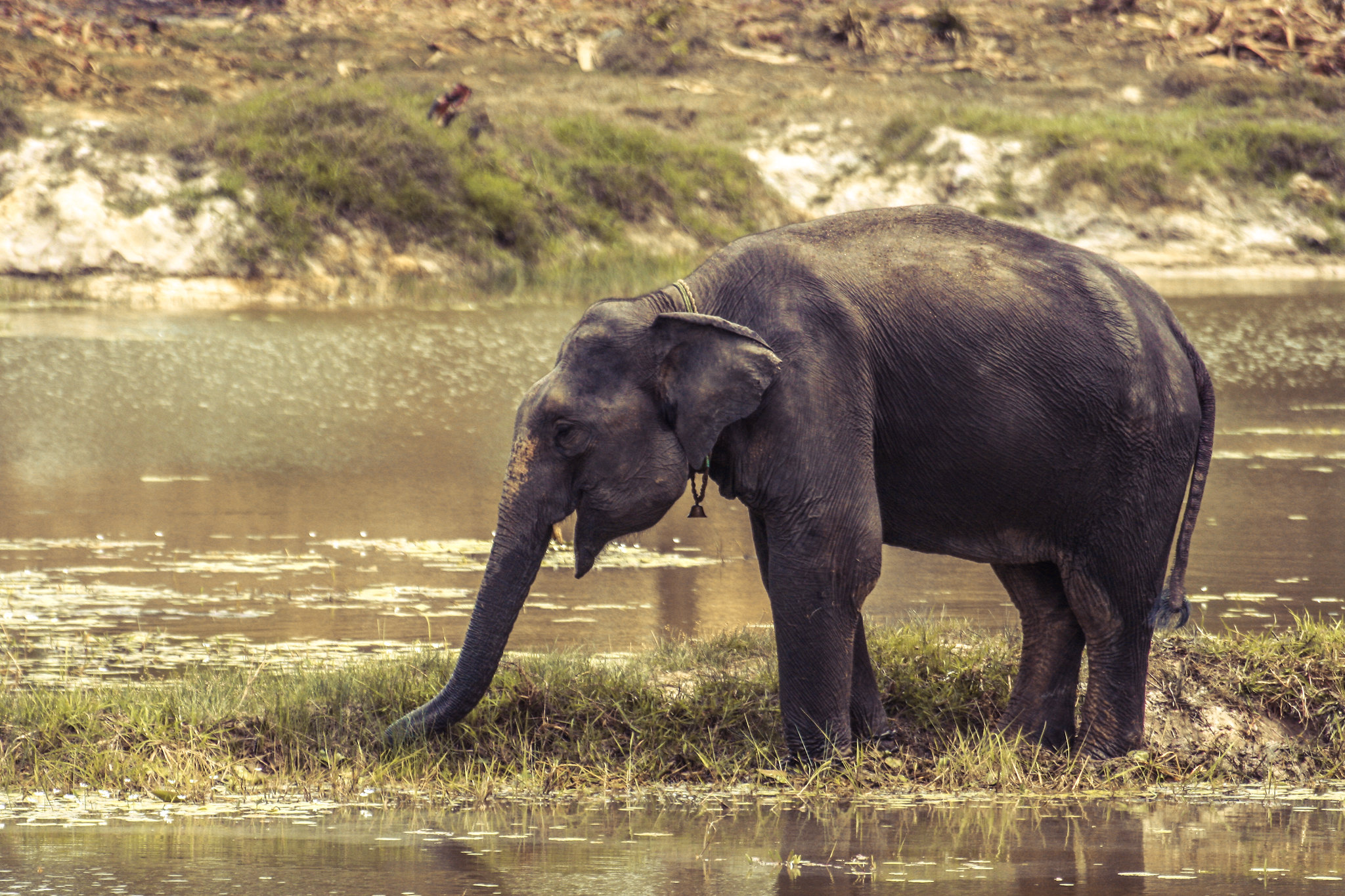 A captive elephant grazes by itself. Image by Shikirocks via Flickr (CC BY-NC-ND 2.0).
A captive elephant grazes by itself. Image by Shikirocks via Flickr (CC BY-NC-ND 2.0).
Conservation initiatives for the wild ones
As per data published in 2016, Bangladesh recorded the presence of elephants in 44 forest ranges covering 1,518 square kilometers (586 square miles).
Meanwhile, resident elephants are falling victim to various unplanned development projects in southeastern Bangladesh, while the majority of nonresident elephants in the northeastern part of the country are in trouble due to conflicts with humans.
In 2018, the government formulated a 10-year Elephant Conservation Action Plan to guide the implementation of elephant conservation activities in the country.
Apart from this, under a project called Sustainable Forests & Livelihoods, the forest department, along with organizations like IUCN Bangladesh, engaged local communities in conflict-prone areas by forming elephant response teams (ERT) as a conservation tool to avoid conflict between humans and elephants.
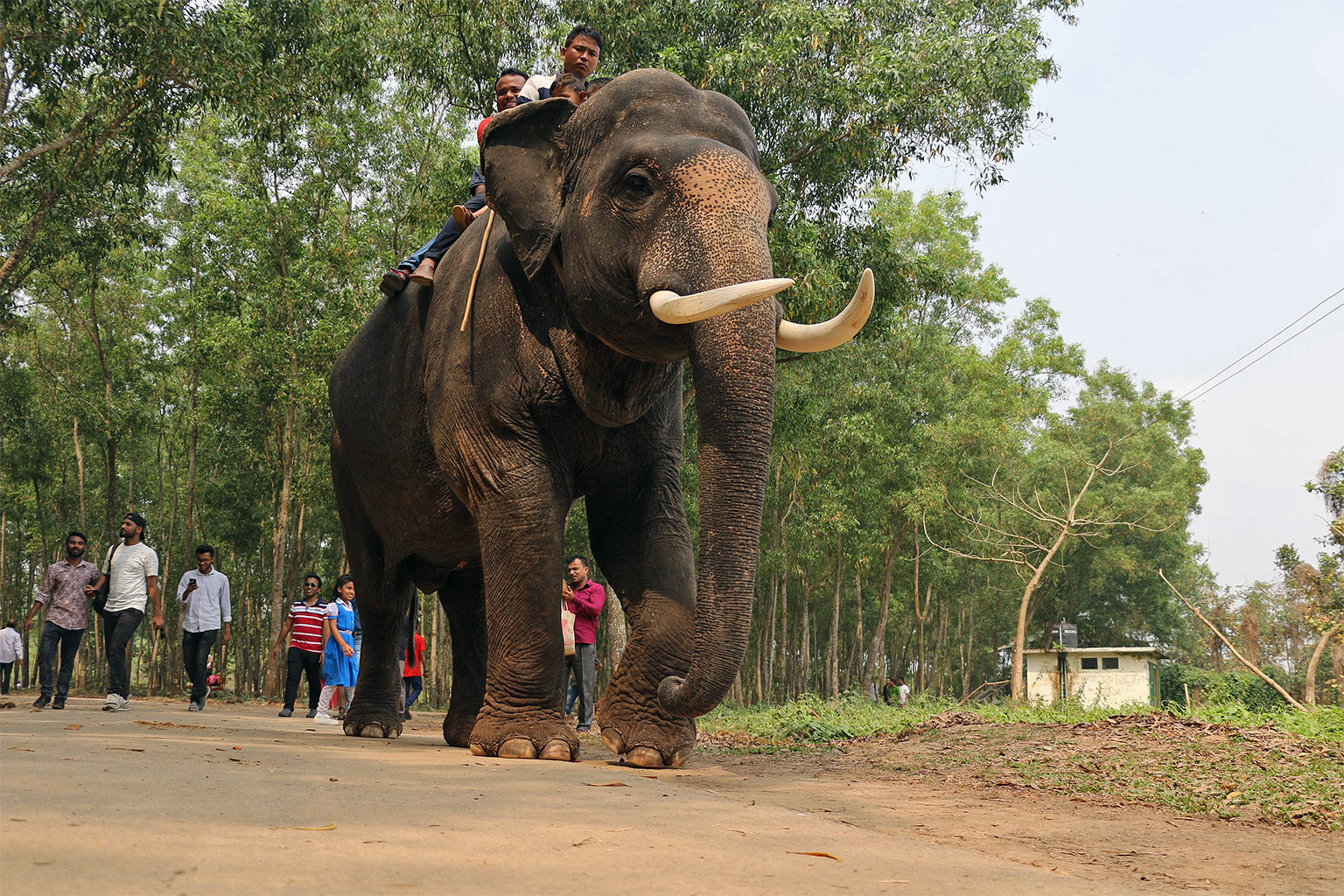 Visitors to a safari park in Gazipur enjoy a ride on an elephant. Historically, elephants in Bangladesh have been used for a variety of purposes, including amusement and carrying timbers and goods. Image by SabbirAbeir (Md Sabbir) via Wikimedia Commons (CC BY-SA 4.0).
Visitors to a safari park in Gazipur enjoy a ride on an elephant. Historically, elephants in Bangladesh have been used for a variety of purposes, including amusement and carrying timbers and goods. Image by SabbirAbeir (Md Sabbir) via Wikimedia Commons (CC BY-SA 4.0).
ERT is formed by local people who play a major role in raising awareness about elephants in various ways, such as providing information on elephant herds’ movements and educating the public about elephant conservation and appropriate actions regarding wild animals.
Considering the loss of humans and their resources as a result of conflicts between elephants and humans, in 2010, Bangladesh introduced a compensation package for families who lost members and resources like households and crop fields due to the wild animal attacks.
Banner image: A teenage mahout and his elephant in Bogura, Bangladesh. Image by Rocky Masum via Wikimedia Commons (CC BY-SA 4.0).
Bangladesh plans new ‘protected area’ for elephants in its conflict-prone northeast
Feedback: Use this form to send a message to the author of this post. If you want to post a public comment, you can do that at the bottom of the page.

